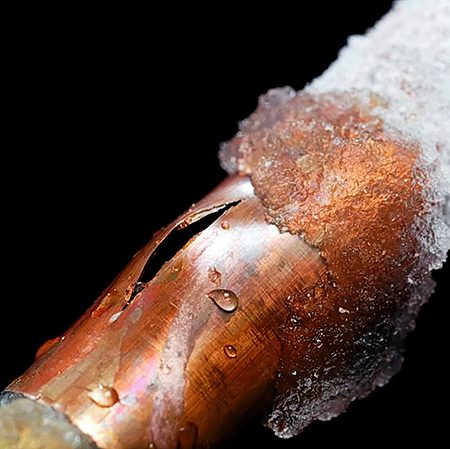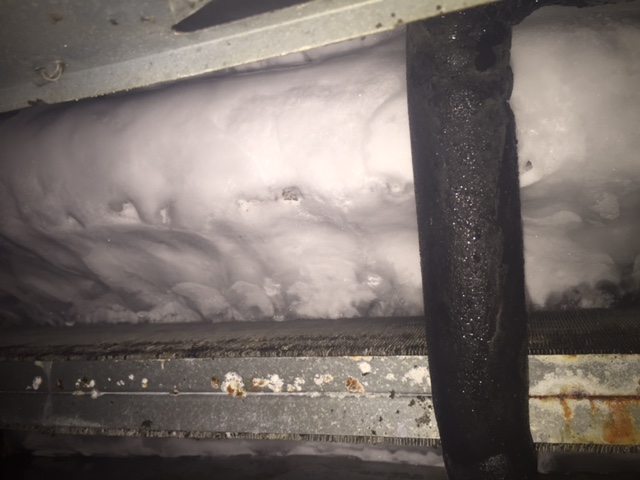The content which follows about Have a Frozen AC Line? Here’s How to Fix It is without a doubt enlightening. Don't overlook it.

Intro
Discovering that your air conditioning pipeline is iced up can be worrying, specifically throughout hot summer months when you depend on your ac unit the most. Understanding what to do in such a circumstance is vital to stop more damages to your air conditioning system and ensure your comfort indoors.
Understanding the Causes
Numerous variables can add to the cold of an AC pipeline. Comprehending these causes can assist you deal with the problem successfully.
Absence of Airflow
One typical root cause of a frozen air conditioning pipeline is inadequate airflow. When the air flow over the evaporator coil is restricted, it can create the coil to drop below freezing temperature level, resulting in ice development on the pipeline.
Reduced Refrigerant Levels
Not enough cooling agent degrees in your a/c system can likewise lead to a frozen pipe. Reduced cooling agent levels can cause the pressure in the system to go down, bring about the freezing of moisture on the evaporator coil.
Winter Conditions
In cooler environments, freezing temperatures outside can contribute to the freezing of air conditioning pipes. If your AC device is not effectively shielded or if there are leaks in the ductwork, cold air can penetrate the system, creating the pipe to freeze.
Dirty Air Filters
Unclean or stopped up air filters can restrict airflow in your air conditioner system, causing different issues, consisting of an icy pipe. It's essential to change or clean your air filters regularly to make certain appropriate airflow and protect against ice accumulation.
Signs of a Frozen A/c Pipe
Acknowledging the indicators of an icy a/c pipe is vital for prompt action.
Lowered Airflow
If you observe a significant decline in airflow from your vents, it can indicate an icy pipe.
Ice Buildup on the Pipe
Noticeable ice buildup on the cooling agent line or the evaporator coil is a clear indication of an icy AC pipeline.
Strange Sounds from the Unit
Uncommon audios, such as hissing or bubbling, originating from your air conditioning device can signal that there's ice existing on the pipe.
Immediate Actions to Take
When faced with an icy AC pipeline, it's essential to act swiftly to stop additional damages to your cooling system.
Shutting off the a/c
The first step is to turn off your air conditioner to avoid the system from running and aggravating the issue.
Checking for Blockages
Check the location around the indoor device for any obstructions that might be obstructing airflow, such as furniture or curtains.
Defrosting the Pipe
You can make use of gentle methods like putting towels taken in cozy water around the frozen pipe to assist thaw it gradually.
Safety nets
Taking safety nets can aid stay clear of future occurrences of a frozen air conditioning pipeline.
When DIY Methods Fail
If your efforts to thaw the pipeline or address various other issues are unsuccessful, it's time to contact a specialist.
Relevance of Hiring a Professional HVAC Technician
A certified HVAC technician has the competence and devices essential to detect and fix concerns with your AC system safely and effectively.
Regular Maintenance Checks
Schedule regular maintenance checks with an expert HVAC professional to make certain that your air conditioner system is running successfully.
Altering Air Filters
Frequently replace or clean your air filters to prevent airflow restrictions and maintain optimal performance.
Shielding Exposed Pipes
If your air conditioner pipes are revealed to cool temperatures, think about shielding them to avoid freezing during winter season.
Seeking Professional Help
If DIY methods fall short to settle the concern or if you're not sure about how to continue, it's ideal to look for help from a qualified HVAC technician.
Verdict
Taking care of an icy AC pipeline can be an irritating experience, however understanding how to react can assist minimize damages and restore convenience to your home. By comprehending the causes, identifying the indications, and taking prompt activity, you can efficiently resolve the problem and avoid future events.
What to Do If Your AC Line Is Frozen
Make Sure All Supply and Return Air Vents Are Open
If you notice problems with airflow, the first thing you should do is check your supply and return vents. Supply vents distribute clean, conditioned air throughout your home. As this air becomes stale, it’s pulled into the return vent, where it’s reconditioned before being sent back out through the supply vent.
When these vents are closed, air won’t flow in the home. Before examining your AC, check the vents in every room and ensure they’re all open.
Check for a Dirty Air Filter
Another possible cause of limited airflow is a dirty air filter. Your air conditioner’s filters catch elements you don’t want to breathe in, such as dirt and dust. Over time, filters can become clogged, ultimately blocking air from flowing in and out. The lack of airflow can then cause the entire coil to freeze and will completely restrict any air from moving through it. The AC may need to be powered off for one to two days to allow the coil to thaw after replacing the filter to allow proper functioning of the unit. This debris can also accumulate on your AC’s evaporator coil, requiring a more serious repair. In general, air filters should be cleaned regularly (about every two weeks).
Assess Your Outdoor Unit
In addition to checking your AC, assessing the outdoor unit is a good idea. Also known as the condensing unit, it works with your interior unit to release heat outside. An issue with the outdoor unit can result in rising internal temperatures.
Overgrown Shrubs or Clogged Leaves
From leaves and twigs to shrubs and debris, there’s no shortage of outdoor elements that can accumulate around your condensing unit. When these elements get lodged inside the unit, they can block airflow. Fortunately, removing the blockage can solve the problem.
Sounds of a Broken Fan
Shrubs and leaves aren’t the only things that can impede your outdoor unit’s airflow. If the fan is broken, the unit won’t be able to properly get rid of heat — which means the internal temperature won’t go down. First, make sure the fan is spinning. If it is, check for the following sounds of a broken fan:
Buzzing Rattling Screeching Hissing Clicking Preventative Measures
Nobody wants to deal with a frozen AC line. In addition to causing problems with your air conditioner, they require professional repairs. On the bright side, there are preventative measures you can take to help ensure this issue doesn’t arise in the first place.
https://www.coopergreenteam.com/blog/what-to-do-if-ac-line-frozen

Hopefully you enjoyed reading our topic on Why Is Ice On My Outside Air Conditione. Thanks so much for spending some time to read through our piece of content. I beg you take the opportunity to distribute this content if you enjoyed it. Bless you for your time. Visit again soon.
Click Here